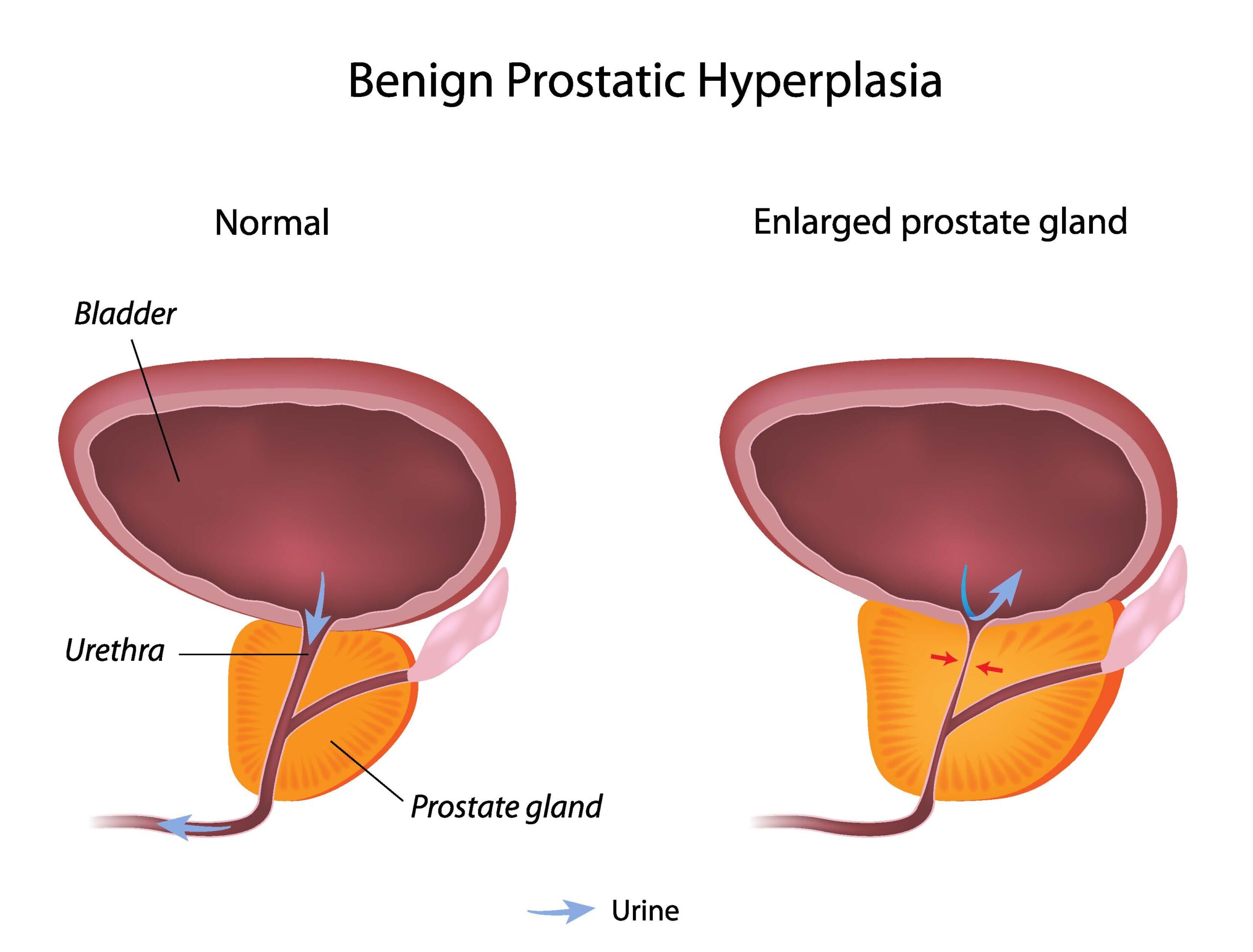Over 50% of men above the age of 60 suffer from the symptoms of benign prostatic hyperplasia (BPH), which is characterized by an enlarged prostate. The prostate is a gland that sits below the bladder and surrounds the urethra, the tube through which urine passes from the body. As the prostate grows, the urethra becomes compressed, making it difficult for sufferers of this condition to urinate.
While not life-threatening, it can cause medium to extreme discomfort depending on the circumstances.
Some of the symptoms of BPH include:
Statistics from the National Institute of Diabetes and Digestive and Kidney Diseases also show that BPH rarely shows symptoms before the age of 40, but that as many as 90% of men in their 70’s and 80’s show symptoms.
BPH and an enlarged prostate gland is usually found during a routine rectal exam, but can also be discovered using urinalysis tests, urine flow studies, a cystoscopy, or transrectal ultrasound.
Urolift is an innovative and minimally invasive procedure that can dramatically lower the intensity of sufferers of BPH. Approved by the FDA in 2013, the procedure can help men having problems with their urination get some relief.
It involves utilizing tiny implants to lift and hold the enlarged prostate tissue away from the urethra. This prevents the squeezing and blocking of the urethra and relieves the pressure that is making it difficult to urinate.
It involves no cutting, heating, or removal of prostate tissue—and is generally considered an outpatient procedure. After the procedure has been performed, the success can immediately be confirmed endoscopically.
Any man experiencing the symptoms can consult with his urologist about whether Urolift is suitable for his condition.
The doctor usually begins by performing a cystoscopy, a procedure in which a tiny camera is used to examine the prostate and bladder. Using the knowledge gleaned from this procedure, the doctor will then determine if they are an appropriate candidate for a Urolift procedure.
The doctor may have additional instructions depending on the other pre-existing conditions of the patient, but in general, the procedure can take as little as one to two hours to finish.
After the procedure is done, the doctor should recommend some postsurgical care treatments. In some rare cases, a catheter might be necessary after the procedure. Within a few days, you could expect a vast reduction in BPH symptoms with no risk of sexual dysfunction.
At that critical age in your life, it is important to consider all the options you have that can improve your quality of life. Urolift is one such procedure that can do so with little risk of injury or side effects.
And if you’ve been experiencing the symptoms of BPH, send us at the University Urology Associates of New Jersey a message. We have experienced specialists, compassionate staff, and state of the art treatments for all your needs.
All content found on the UUANJ.COM Website, including text, images, audio, or other formats were created for informational purposes only. The content is not intended to be a substitute for professional medical advice, diagnosis, or treatment. Always seek the advice of your physician or other qualified health providers with any questions you may have regarding a medical condition. Never disregard professional medical advice or delay in seeking it because of something you have read on this website. If you think you may have a medical emergency, call your doctor, go to the emergency department, or call 911 immediately.


